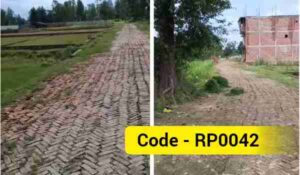Registration Act 2025 vs. 1908: A Detailed Comparative Analysis and Future Prospects
India’s legal framework for property and document registration has long been governed by the Registration Act, 1908. While revolutionary in its time, this 117-year-old law has become outdated in the face of modern technological and administrative demands. To address these shortcomings, the Department of Land Resources under India’s Ministry of Rural Development has introduced the draft Registration Bill 2025, aiming to replace the 1908 Act with a fully digital, paperless, and citizen-centric registration system. This blog provides an in-depth comparison of both acts, analyzing their differences, benefits, challenges, and future implications.

Registration Act, 1908: Historical Context and Features
The Registration Act, 1908, enacted during British rule, was designed to provide legal recognition to property-related documents, ensuring transparency and reducing disputes. Its key features include:
- Mandatory Registration:
- Certain documents, such as those related to property transfers (sale deeds, gift deeds, or leases), required mandatory registration under Section 17.
- This ensured legal validity and enforceability of transactions.
- Optional Registration:
- Registration of wills was optional. This was recently reaffirmed by the Allahabad High Court in 2024, which struck down a 2004 Uttar Pradesh amendment mandating will registration, clarifying that unregistered wills remain legally valid.
- Manual Process:
- Parties were required to physically appear at sub-registrar offices for registration.
- Documents were recorded in paper registers, increasing the risk of errors and fraud.
- Local Operations:
- Sub-registrar offices were established in each district, but there was no centralized database.
- Record maintenance and verification were time-consuming and complex.
- Limited Technology:
- In 1908, digital technology was non-existent, making the process entirely paper-based.
Shortcomings:
- Slow and cumbersome processes, leading to high time and cost expenditures.
- Susceptibility to fraud, such as forged documents or duplicate registrations.
- Difficulty in retrieving and verifying records, contributing to property disputes.
Read More…
- Uttar Pradesh Building Construction and Development By-Laws 2025
- Laws Governing the Sale of Land by Scheduled Caste Landowners to General Category in Uttar Pradesh
- Understanding Section 80 (Section 143) of the Uttar Pradesh Revenue Code, 2006
- Succession Laws in Uttar Pradesh
- 12 Years of Possession (Adverse Possession) and the Property is Yours? The Complete Story of the Limitation Act and Supreme Court Rulings!
- Land Acquisition Act 2013: The Real Story of Farmers’ Rights!
Registration Bill 2025: A Leap Toward the Digital Era
The Registration Bill 2025, proposed by the Department of Land Resources, is currently in the draft stage, with public suggestions invited within 30 days. Aligned with India’s Digital India initiative, the bill aims to modernize property registration by making it fully digital, transparent, and citizen-friendly. Its key provisions include:
- Fully Online Process:
- Property and document registration will be conducted online, with mandatory Aadhaar-based verification and digital signatures.
- Citizens can complete registrations from home, saving time and travel costs.
- Centralized Digital Database:
- All registered documents will be stored in a centralized digital database, updated in real-time.
- This ensures transparency and easy access to records.
- Technological Integration:
- Biometrics, digital signatures, and encrypted data transfers will enhance security and reliability.
- Online payment gateways and digital stamp papers will simplify the process.
- Integration with land ownership records, such as those under the Svamitva Scheme (drone-based surveys), will improve accuracy.
- Citizen-Centric Reforms:
- A user-friendly online portal will allow citizens to upload, track, and download documents.
- Real-time notifications and status updates will enhance transparency.
- Plans for mobile apps and support centers aim to ensure accessibility in both rural and urban areas.
- Security and Privacy:
- Robust cybersecurity protocols, including data encryption, will protect sensitive information.
- Aadhaar-based verification will minimize fraudulent registrations.
Detailed Comparative Analysis
| Feature | Registration Act, 1908 | Registration Bill, 2025 |
|---|---|---|
| Process | Manual, paper-based, physical presence | Fully digital, paperless, online verification |
| Accessibility | Limited to local sub-registrar offices | Online portal and mobile app access |
| Verification | Manual, physical document inspection | Aadhaar, biometrics, and digital signatures |
| Data Storage | Paper registers, local storage | Centralized digital database, real-time updates |
| Transparency | Limited, prone to human errors | High, with digital records and online tracking |
| Processing Time | Days or weeks | Hours to 1-2 days |
| Will Registration | Optional (per Allahabad HC 2024 ruling) | Optional, with digital process available |
| Fraud Prevention | Limited, risk of forged documents | Minimal, with biometrics and Aadhaar |
| Cost | High (travel, time, manual process) | Low (online process, digital stamps) |
Why the New Act is Necessary: In-Depth Analysis
- Alignment with Digital India:
- The Registration Bill 2025 aligns with the Digital India and Svamitva Scheme initiatives. The Svamitva Scheme, which uses drone-based surveys to digitize rural property records, will integrate with the bill’s centralized database, enhancing property ownership clarity and reducing disputes.
- Transparency and Accountability:
- The 1908 Act’s manual processes were prone to corruption and bribery. The digital system will minimize such issues, as all transactions will be traceable and online.
- A centralized database will simplify ownership verification, curbing fraudulent sales and duplicate registrations.
- Citizen Convenience:
- The old system required multiple visits to sub-registrar offices, wasting time and money. The new system allows registrations from home, particularly benefiting rural citizens where offices are often far away.
- Reduction in Property Disputes:
- Property disputes are a major cause of litigation in India. Digital records, combined with the Svamitva Scheme, will clarify ownership, reducing legal conflicts.
- For instance, the Svamitva Scheme aims to provide digital property cards to 6.62 lakh villages by 2025, complementing the new bill’s framework.
- Economic Impact:
- Transparent registration will boost investor confidence in the real estate sector.
- Reduced time and costs will benefit small businesses and individuals, fostering economic growth.
Challenges and Solutions
- Digital Literacy and Infrastructure:
- Challenge: Limited internet connectivity and digital literacy in rural areas.
- Solution: Expand Common Service Centers (CSCs) and mobile vans, and launch digital literacy campaigns with multilingual portals.
- Data Security:
- Challenge: Risks of cyberattacks and data breaches in a digital database.
- Solution: Implement robust cybersecurity measures, including two-factor authentication, encryption, and regular security audits.
- Digitization of Legacy Records:
- Challenge: Converting millions of paper records to digital formats is resource-intensive.
- Solution: Adopt a phased approach, prioritizing critical records and leveraging AI for efficient digitization.
- Legal and Administrative Coordination:
- Challenge: Land is a state subject, requiring coordination between central and state governments.
- Solution: Conduct consultations with states and develop a unified policy framework.
Future Prospects
- Smart Governance:
- The Registration Bill 2025 is a step toward smart governance. Integration with platforms like DigiLocker and e-Courts can create a holistic digital ecosystem.
- Global Competitiveness:
- A digital registration system will enhance India’s ranking in the World Bank’s Ease of Doing Business index, attracting global real estate investments.
- Social Inclusion:
- By integrating with the Svamitva Scheme, the bill will empower marginalized communities, particularly women, by ensuring clear property rights in rural areas.
- Environmental Benefits:
- A paperless system will reduce paper consumption, contributing to environmental conservation.
Recent Context: Waqf (Amendment) Act, 2025
The Waqf (Amendment) Act, 2025, recently challenged in the Supreme Court, also emphasizes digital registration for waqf properties. However, provisions like appointing non-Muslim members and mandatory formal deeds have sparked controversy, highlighting potential legal challenges for the Registration Bill 2025 as well.
Conclusion
The Registration Bill 2025 is a bold step toward modernizing India’s property registration system, addressing the shortcomings of the Registration Act, 1908, such as manual processes, fraud risks, and inefficiencies. While challenges like digital literacy, cybersecurity, and legacy record digitization remain, the bill’s potential to transform governance, reduce disputes, and boost economic growth is immense.


















